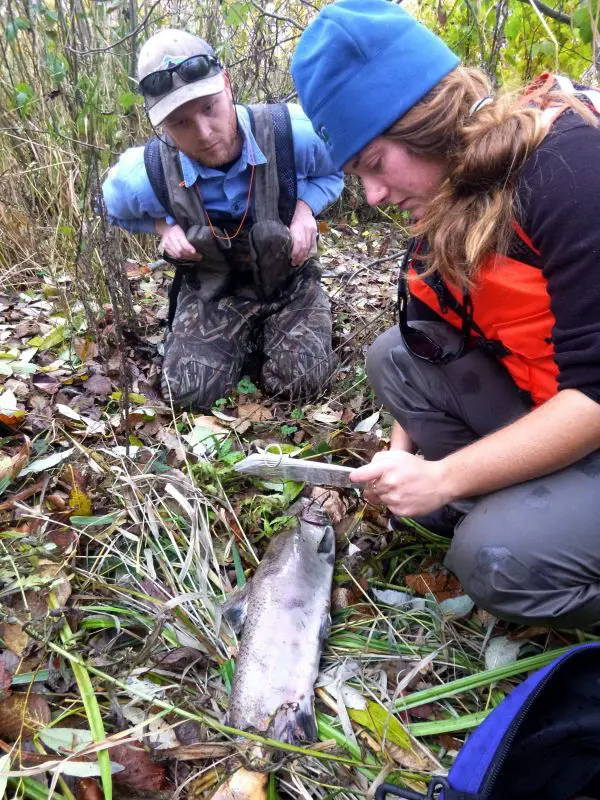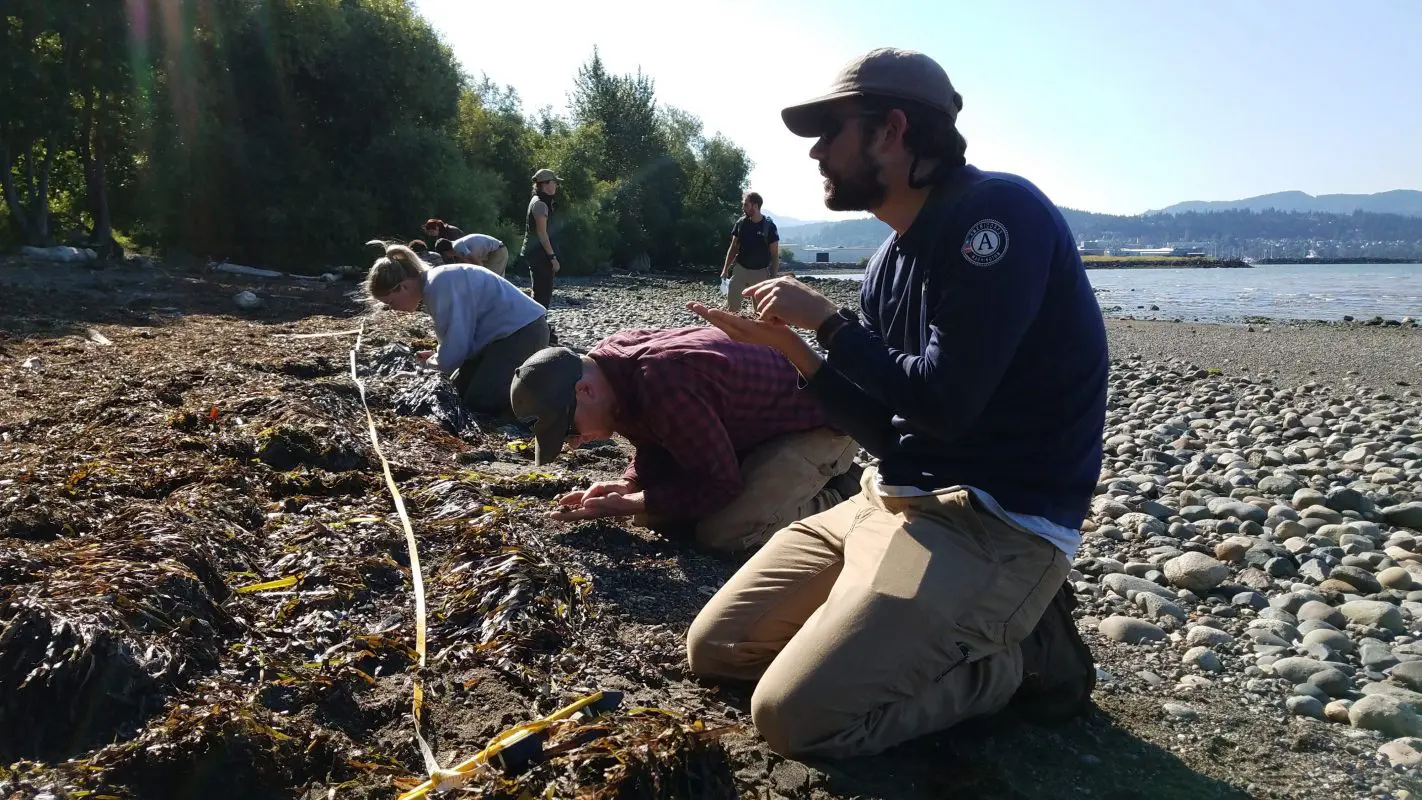The City of Bellingham Natural Resources Division conducts a number of monitoring studies to better understand how fish utilize our riparian and nearshore habitats.
Spawning Salmon
Adult salmon and sea-run trout return from the ocean to spawn in our freshwater streams. Most salmon return to spawn in Bellingham streams in the fall, while spawning steelhead and cutthroat trout have been observed all the way through early July.

Want to see spawning salmon in Bellingham?
Fall is typically the best time to see spawning salmon in our local streams. The most reliable viewing locations are from the footbridges in Arroyo Park and Maritime Heritage Park, but you also may be able to see some from the trails in Fairhaven Park downhill of the tennis courts or the footbridge over the Little Squalicum Estuary.
Each year, the Nooksack Salmon Enhancement Association (NSEA) offers several salmon sighting events at local streams in the fall where you can see spawning salmon. These free events include knowledgeable staff who can answer your salmon questions.
Please protect spawning salmon and trout by keeping people and pets on designated trails and out of streams. Fish redds (nests) in the streambed are very sensitive to disturbance. Stepping on or near a redd can cause all of the eggs within it to die. Please also avoid stepping on plants. Fish depend on stream-side vegetation for shade and nutrients.
Spawner Surveys
The City has conducted surveys in Squalicum Creek, Whatcom Creek and Padden Creek to document how these spawning fish use our City streams. When conducting a spawner survey, surveyors walk upstream and record the number and species of live and dead fish as well as the location of redds. The surveys are conducted once every 7-10 days throughout the entire spawning season (September – June). The City currently conducts spawner surveys periodically.

Smolt Traps
In spring, out-migrating juvenile fish are monitored using smolt traps. A “smolt” is one of the life stages of a juvenile salmonid. This life stage occurs when the juvenile fish begins its migration from freshwater to the estuary, gradually adjusting to life in saltwater. Different species spend different amounts of time rearing in freshwater. For example, Coho salmon spend one to two years rearing in freshwater. They reach about 50-100 mm in size before they smolt and begin migration to the estuary. Smolt traps are checked multiple times each day so that fish can be identified and measured before being released back into the stream to continue their journey out to sea.

- 2018 Padden Creek Smolt Trap Data Summary (PDF)
- 2001 & 2015 Squalicum Creek Smolt Trap Data Summary (PDF)
- 2005 Spring Creek Smolt Trap Data Summary (PDF)
- 2004-2016 Cemetery Creek Smolt Trap Data Summary (PDF)
- 2003 Baker Creek Smolt Trap Report (PDF)
Forage Fish

Forage fish are an important food source for salmon. Since June 2017, the City has conducted monthly monitoring studies at Little Squalicum beach and Waypoint Park to better understand where forage fish spawn. These monitoring studies reveal that surf smelt – a type of forage fish – continue to use these Bellingham beaches for spawning.
- State-wide Forage Fish Spawning Interactive Map
- 2016 Bellingham Bay Forage Assessment prepared for the Port of Bellingham (PDF)
Nearshore Juvenile Chinook Study

This project was a collaboration between the City of Bellingham, the Skagit River System Cooperative (on behalf of the Sauk-Suiattle Indian Tribe and the Swinomish Indian Tribal Community), and the Lummi Nation. The study investigated the role of estuarine and nearshore marine habitats on Nooksack early Chinook productivity and abundance. The study compiled data on juvenile salmon collected by Lummi Natural Resources from 2003 through 2015 and additional data collected through this study in 2014 and 2015.
- Map of Sample Sites
- Pre-Project Fact Sheet
- FINAL REPORT: Assessment of Juvenile Chinook Salmon Population Structure and Dynamics (PDF)
